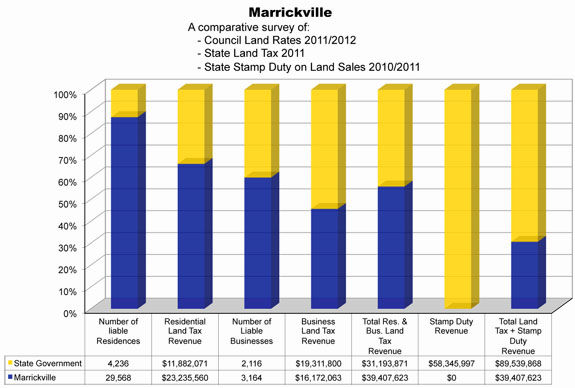
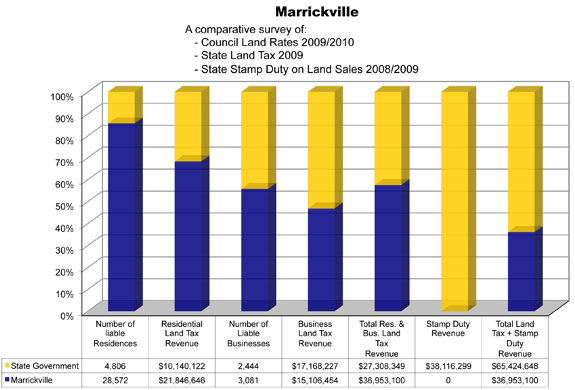
Free information about NSW state land tax


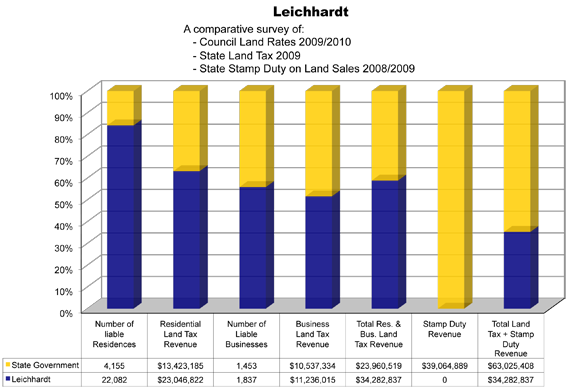
The poll graphs provide a comparison between State Land Tax (SLT) and local council land tax—which most people call “council Rates”.
[we will be posting more comparative graphs soon]
All land values for land taxing in NSW, are set by the Valuer General, (the VG engages private contractors) using a valuation process known as the “statutory mass valuations methodology” that deems all land as vacant land ready to build, for land taxing and set on a common date within each council area.
This valuation process is the instrument the VG must apply when setting each council’s “Valuation Rolls”, which, councils must use to impose council land tax “Rates”.
The council rolls are re-set every three years. State Government also imposes SLT on land value set by the VG, applying the same valuation methodology. For SLT, land values are adjusted annually.
The intergrity of the mass valuation process was/is seriously damaged when the Carr Government removed public/residents access to council valuation rolls. Removing “transparency” defiled the process, taking away an integral element of the mass valuation methodology intent, to be “transparently open, fair, seeking to equitably distribute the funding of council’s among Rate-payers”.
Removing transparency abolished a long-established element to safe-guard the veracity of the process, by giving resident the right to scrutinise and inspect council valuation rolls, a right that was sacrosanct, until the Carr Government came along.
Only recently The Sydney Morning Herald reported – May 2012 – 9th April /12 by Sean Nicholls, and headed BLOWTORCH APPLIED TO LAND TAX VALUATION raised serious concerns about valuation inconsistencies for land taxing. exposing why the valuation process was/should be transparent.
By deeming of all land as vacant to set land values for land taxing, effectively, is taxes all private land on re-development value, or future use within each council area. This methodology is called. “Highest and best use valuation”, an economic term, NOT, intended to be a planning term. However, state Treasury has designed SLT agenda to exploit the this valuation methodology,aware it impacts freehold land existing use,accordingly, SLT is used as a ruthless stealth planning weapon,without mandate. In established council areas vacant land is a rare sale, still, “all land is land taxed as vacant ready to build” a planning situation that may not eventuate in 50 years, yet, is taxed today at a rapacious SLT tax rate.
The NSW Treasury is aware the mass valuation methodology was intended to set Local Government valuation rolls, applying a methodology to impose its land tax “Rates” and seeking the equitable spread of councils’ funding among ratepayers.
Done, basically by councils
By contrast, SLT agenda is designed to exploit the mass valuation methodology to selectively disadvantage and undermine freehold land existing use to
This is achieved by SLT stealth planning agenda that is not generally appreciated, despite the overwhelming evidence.
It is done by
NSW State Treasury SLT agenda has
Examples expose how a determined SLT agenda is applied to impact Freehold land existing use, showing the extent un-pegged SLT exceeds pegged council residential land tax “Rates”
In 2009, expressed as a percentage:
etc. etc
It is a major concern for this beautiful City of Sydney, that our State Governments has developed a craving to generate and compound additional State property taxes, using SLT to undermine freehold land existing use and promote its conversion into stacked strata housing. That has reached such a degree that the development business that builds strata stack housing, can be described as “the State Treasury construction arm”, generating and compounding additional state property taxes.
For an example, just look at what is occurring to freehold industrial land in the Redfern to Mascot potential ‘Horridor’.
We will be posting up-dated comparative data graphs soon.
PS: Read the our 26th July 2011 letter to NSW Premier Barry O’Farrell.
(No reply from the Premier at 18th May 2012.)
This letter raises the question of SLT revenues connection with State Superannuation.
Mike Danzey
Certified Valuer.
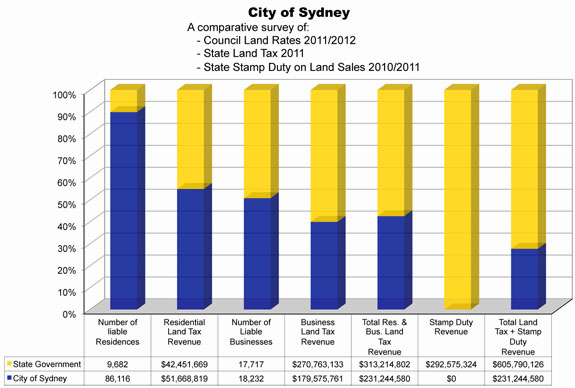
A comparative survey of:
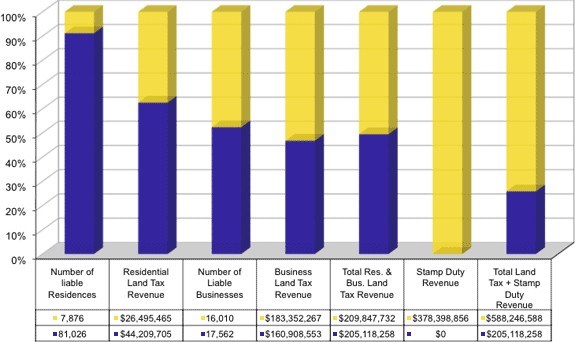
| State Government | |
| City of Sydney |
Note: Data is exclusively sourced from both levels of government.
© This information is the property of CJ Danzey, Registered Real Estate Valuers and can only be reproduced with the authority of the owner.
Since 2000 annual surveys have been carried out comparing State Land Tax (SLT) with local Council Land Tax Rates (CLR). The surveys involve all council areas in the Sydney region, and all coastal councils from Bega to the Tweed. Continue reading “Comparison of Land Tax data with Council Rates”